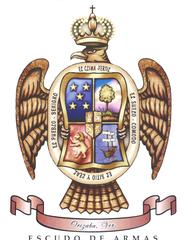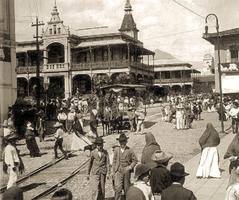
Complete Guide to Visiting Puente del Toro in Orizaba, Mexico
Publication Date: 01/08/2024
Introduction to Puente del Toro
Puente del Toro, also known as Paso del Toro, stands as a testament to the rich historical and cultural tapestry of Orizaba, Mexico. This iconic bridge is not merely a relic of the past but a symbol of the region’s colonial heritage and strategic importance during the era of New Spain. Built in the 19th century, Puente del Toro facilitated the movement of goods and people between the interior of Mexico and the critical port of Veracruz, thus playing a pivotal role in the region’s economic development. The bridge’s significance is further underscored by its depiction in various artworks, such as the chromolithograph by Casimiro Castro in 1877, which is part of the Amon Carter Museum of American Art’s collection (Amon Carter Museum). Today, it continues to attract tourists and history enthusiasts who are keen to explore Orizaba’s colonial past. This comprehensive guide will delve into the historical context, architectural and cultural significance, and provide practical visitor information, including visiting hours, ticket prices, and tips for making the most of your visit.
Contents Overview
- Historical Context
- Architectural Significance
- Cultural Importance
- Strategic Importance
- Modern-Day Relevance
- Visitor Information
- Nearby Attractions
- Accessibility
- Conclusion
- FAQ
- Stay Up to Date
Historical Context
Puente del Toro holds a significant place in the history of Orizaba and Mexico. This bridge is not just a physical structure but a symbol of the region’s rich colonial past and its strategic importance during the era of New Spain. The bridge was part of the essential infrastructure that facilitated the movement of goods and people between the interior of Mexico and the port of Veracruz, which was a critical gateway for trade and communication with Europe.
The bridge’s historical relevance is further highlighted by its depiction in various artworks, such as the chromolithograph by Casimiro Castro in 1877, which is part of the Amon Carter Museum of American Art’s collection (Amon Carter Museum). This artwork underscores the bridge’s importance in the cultural and historical narrative of the region.
Architectural Significance
Puente del Toro is an exemplary piece of colonial engineering. The bridge’s construction reflects the architectural styles and techniques of the time, combining functionality with aesthetic appeal. Its robust structure has withstood the test of time, making it a testament to the engineering prowess of the colonial era. The bridge’s design also facilitated the safe passage of goods and people, which was crucial for the economic development of Orizaba and its surrounding areas.
Cultural Importance
The bridge is not just a historical artifact but also a cultural landmark. It has been a silent witness to the various phases of Orizaba’s development, from its colonial past to its present status as a vibrant city. The bridge’s cultural significance is also tied to its role in local folklore and traditions. It is often featured in stories and legends that are passed down through generations, adding to the rich tapestry of Orizaba’s cultural heritage.
Strategic Importance
During the colonial period, Puente del Toro was a critical point in the network of roads that connected the port of Veracruz with the interior of Mexico. This made it a strategic asset for the Spanish colonial administration, which relied on these routes for the movement of troops, goods, and information. The bridge’s strategic importance continued into the post-independence period, as it remained a vital link in the transportation network of the region.
Modern-Day Relevance
Today, Puente del Toro continues to be an important landmark in Orizaba. It attracts tourists and history enthusiasts who are keen to explore the city’s colonial past. The bridge is also a popular spot for photography, offering picturesque views of the surrounding landscape. Its enduring presence serves as a reminder of Orizaba’s historical and cultural legacy, making it a must-visit for anyone interested in the rich history of the region.
Visitor Information
Visiting Hours
Puente del Toro is open to visitors year-round. The best time to visit is during the dry season, typically from November to April, to avoid the heavy rains that are common in Veracruz.
Tickets
There is no admission fee to visit Puente del Toro. Visitors can explore the bridge and its surroundings freely.
Visitor Tips
- Timing: Plan your visit during the dry season to avoid heavy rains.
- Guided Tours: Consider joining a guided tour to gain deeper insights into the bridge’s history and significance. Local guides often provide fascinating anecdotes and historical context that you might miss otherwise.
- Photography: Bring a good camera to capture the stunning views from the bridge. Early morning or late afternoon light offers the best conditions for photography.
- Footwear: Wear comfortable walking shoes, as the area around the bridge can be uneven and requires some walking.
- Local Attractions: Combine your visit with other nearby attractions such as the Iron Palace, Cerro del Borrego, and the riverside zoo to make the most of your trip to Orizaba (Sailingstone Travel).
Nearby Attractions
- Iron Palace: A stunning iron structure showcasing the architectural ingenuity of the late 19th century.
- Cerro del Borrego: Offers panoramic views of Orizaba and has historical significance related to the French Intervention in Mexico.
- Riverside Zoo: A family-friendly attraction featuring local wildlife.
Accessibility
Puente del Toro is accessible by car and public transportation. Nearby parking is available, and the site is generally easy to navigate for visitors of all ages.
Conclusion
Puente del Toro is more than just a bridge; it is a symbol of Orizaba’s rich historical and cultural heritage. Its significance spans from its colonial origins to its modern-day role as a tourist attraction. By visiting this landmark, tourists can gain a deeper appreciation of the region’s history and the pivotal role that infrastructure played in shaping the economic and cultural landscape of Orizaba. Don’t forget to check out other historical sites in Orizaba to make the most of your visit.
FAQ
- What are the visiting hours for Puente del Toro?
- Puente del Toro is open year-round, with the best time to visit being during the dry season (November to April).
- Is there an admission fee to visit Puente del Toro?
- No, there is no admission fee to visit Puente del Toro.
- What are some nearby attractions to visit?
- Nearby attractions include the Iron Palace, Cerro del Borrego, and the riverside zoo.
- Are guided tours available?
- Yes, guided tours are available and recommended for a more comprehensive understanding of the bridge’s history.
- What should I bring for my visit?
- Comfortable walking shoes, a good camera, and possibly a guidebook or join a guided tour for enhanced experience.
Stay Up to Date
For more information and updates, download the Audiala mobile app, check out other related posts, or follow us on social media.
Sources and Further Reading
- Amon Carter Museum of American Art. (1877). Orizaba desde el puente de Paso del Toro. Retrieved from Amon Carter Museum
- Travellers Worldwide. (n.d.). Best time to visit Mexico. Retrieved from Travellers Worldwide
- Sailingstone Travel. (n.d.). Orizaba guide. Retrieved from Sailingstone Travel
- Savoteur. (n.d.). Orizaba, Veracruz. Retrieved from Savoteur
- La Silla Rota. (2024). Atalaya de Cristal en Orizaba. Retrieved from La Silla Rota
- Mexico Travel and Leisure. (n.d.). Magical towns: Orizaba, Veracruz. Retrieved from Mexico Travel and Leisure

